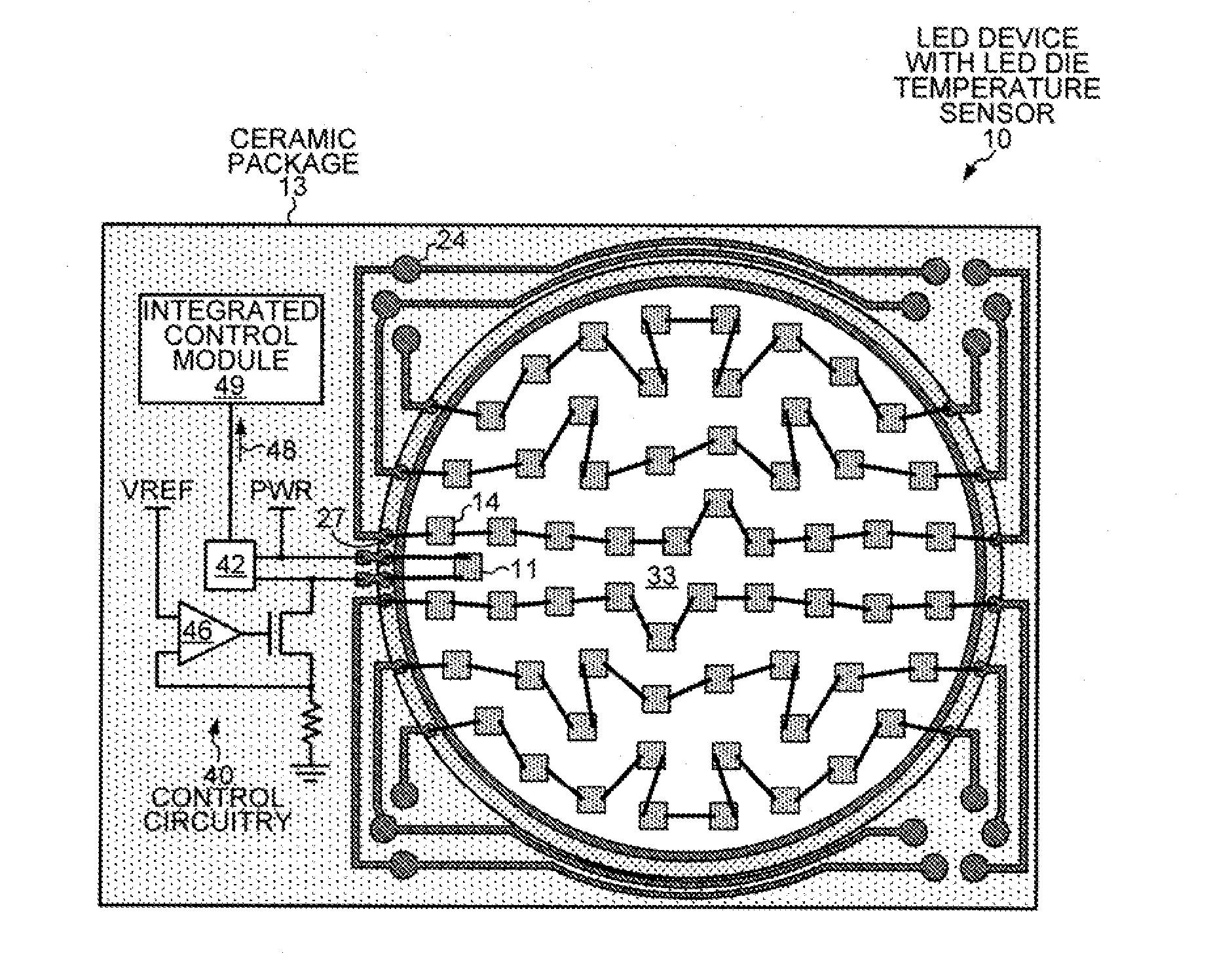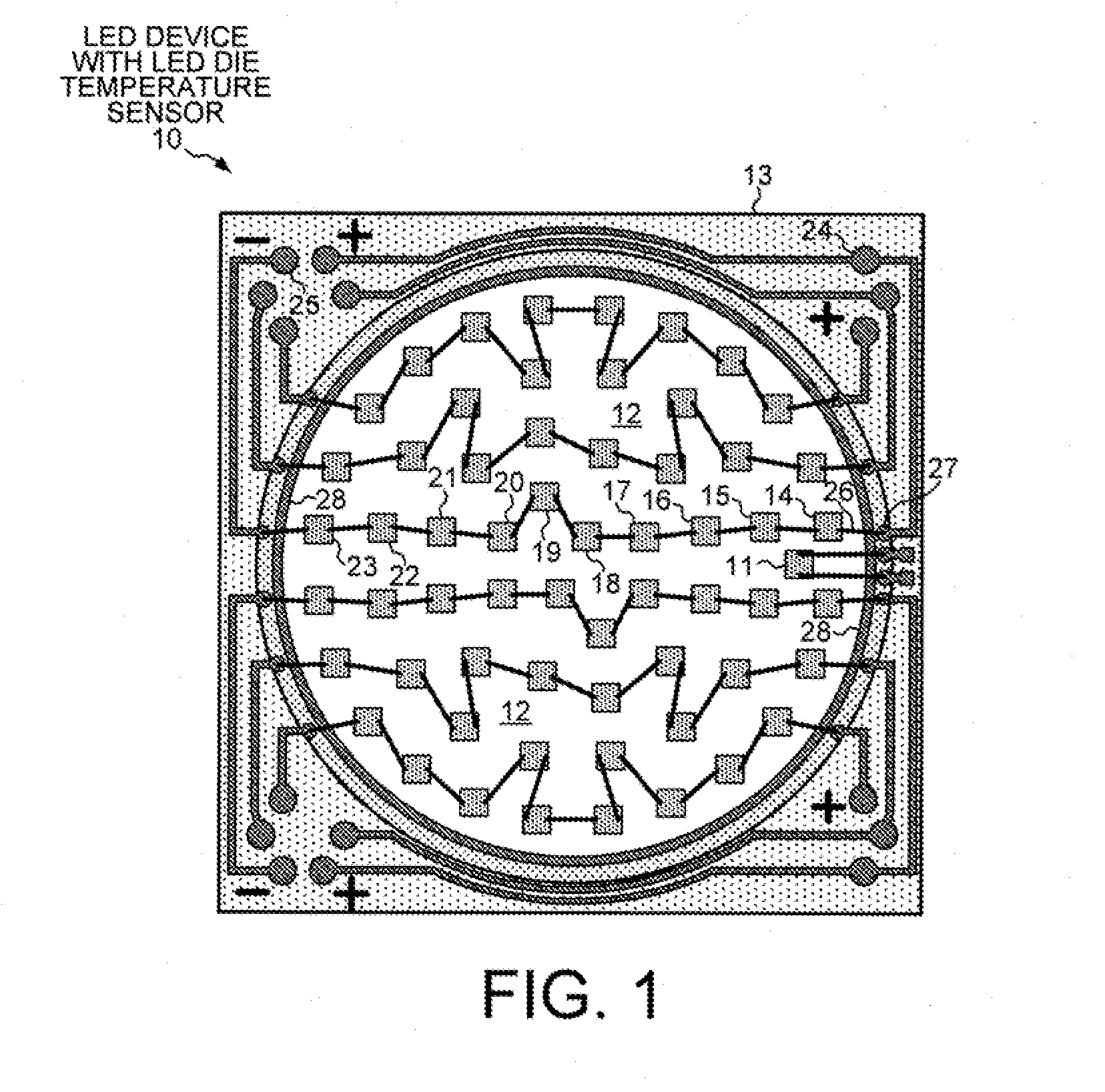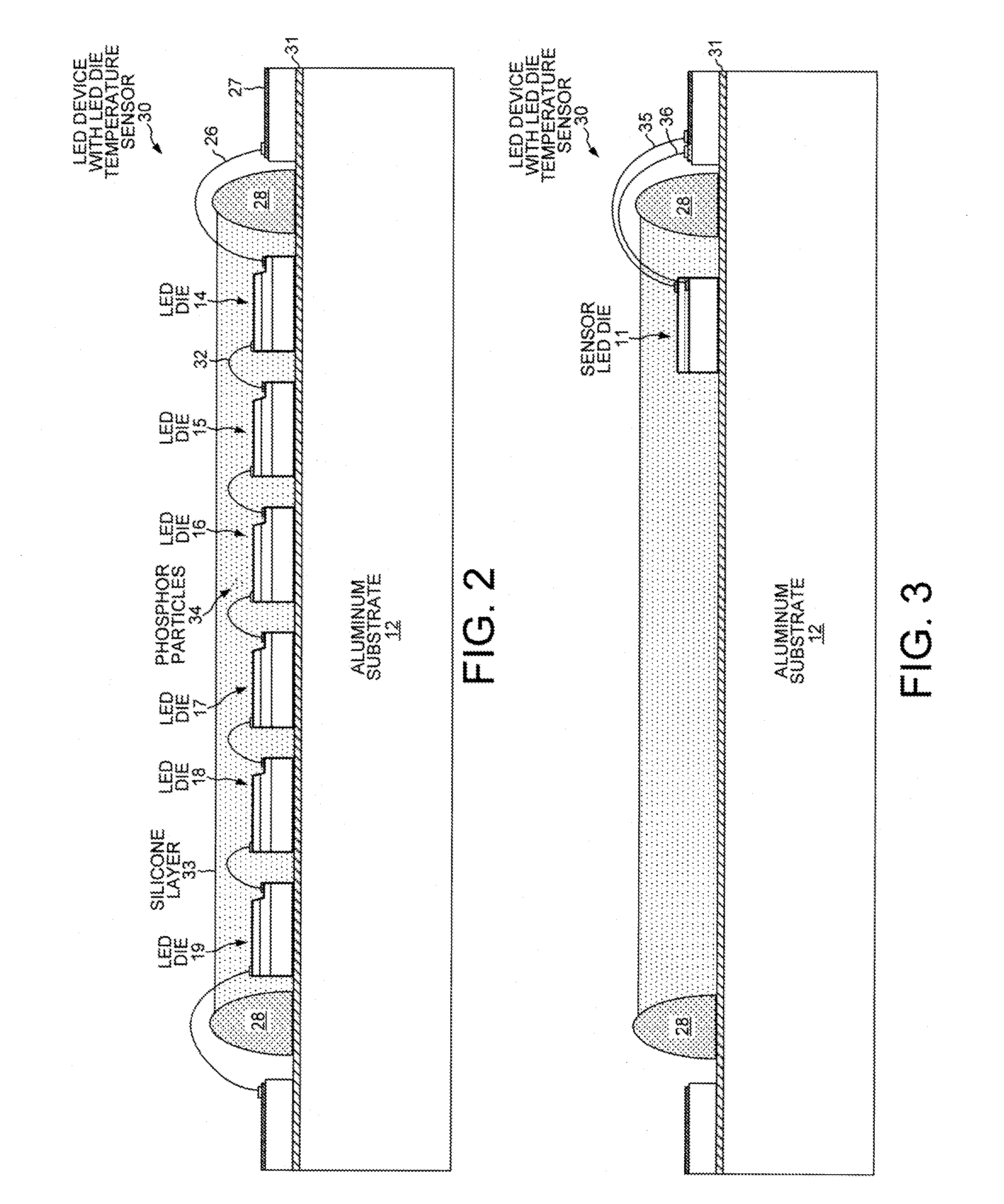Using An LED Die To Measure Temperature Inside Silicone That Encapsulates An LED Array
- Summary
- Abstract
- Description
- Claims
- Application Information
AI Technical Summary
Benefits of technology
Problems solved by technology
Method used
Image
Examples
Embodiment Construction
[0019]Reference will now be made in detail to some embodiments of the invention, examples of which are illustrated in the accompanying drawings.
[0020]FIG. 1 shows a light-emitting diode (LED) device 10 with an LED die 11 used to determine the temperature under a transparent carrier material that includes phosphor and that covers an array of other LED dies. LED device 10 includes an array of sixty-one structurally identical LED dies (chips). Each of the LED dies includes epitaxial layers of GaN or GaInN grown on a sapphire substrate. In other embodiments, the gallium-nitride layer is grown on a substrate of crystalline silicon. Each of the sixty-one LED dies is mounted on an aluminum substrate 12 that is housed in a ceramic package 13. The gallium-nitride LED dies emit blue light with a wavelength of about 452 nanometers when a sufficient drive current is passed through the diodes. For example, a string of ten LED dies 14-23 are connected in series such that a drive current can flow ...
PUM
 Login to View More
Login to View More Abstract
Description
Claims
Application Information
 Login to View More
Login to View More - R&D
- Intellectual Property
- Life Sciences
- Materials
- Tech Scout
- Unparalleled Data Quality
- Higher Quality Content
- 60% Fewer Hallucinations
Browse by: Latest US Patents, China's latest patents, Technical Efficacy Thesaurus, Application Domain, Technology Topic, Popular Technical Reports.
© 2025 PatSnap. All rights reserved.Legal|Privacy policy|Modern Slavery Act Transparency Statement|Sitemap|About US| Contact US: help@patsnap.com



